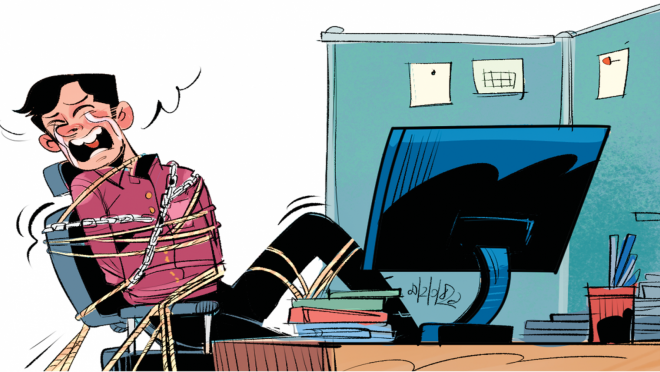5 Steps to beat procrastination and get things done at work
5 Steps to beat procrastination and get things done at work

Procrastination affects nearly every professional at some stage. Whether due to the distractions of remote work, interruptions in a traditional office, or the unpredictability of a hybrid setup, procrastination can easily erode productivity if not addressed directly.
However, with the right strategies, it is possible to overcome delays, manage your energy, and follow through with your plans—regardless of how overwhelmed or demotivated you feel. The following strategies, based on Ali Schiller’s course How to Get Started on Tasks You’re Avoiding, provide practical techniques for improving focus and accountability in the workplace.
1. Plan Your Day in the Morning
While conventional advice suggests planning the next workday in the afternoon, this approach may not suit everyone. The reality is that your mental state, priorities, and even your energy levels can shift overnight.
Planning in the morning allows you to reassess based on the most up-to-date information: overnight developments, your current mindset, and any new responsibilities. It also serves as a gentle entry into your workday. Beginning the day by drafting a task list can help reduce the inertia that often causes procrastination.
If afternoon planning has felt inconsistent or unproductive, trial a morning planning routine for one week and assess the difference.
2. Begin with a Manageable Task
While some advocate “eating the frog”—tackling the most difficult task first—this approach may not always be effective, especially on days when motivation is low.
Instead, consider starting with a small, manageable task related to the larger project. A five- or ten-minute “entry-level task” can help you overcome resistance and ease you into deeper work. For example, if you are launching a new initiative, start by reviewing the project brief and outlining the key steps.
These quick wins generate momentum and release dopamine, reinforcing your brain’s reward pathways and helping you stay on task.
3. Align Tasks with Energy Levels and Reward Good Habits
Recognise that procrastination is often rooted in an energy imbalance rather than a lack of discipline. By understanding your natural mental rhythms, you can assign tasks to match your energy states.
Author David Kadavy outlines seven mental states—prioritise, explore, research, generate, polish, administrate, and recharge. Scheduling tasks that match these mental modes can significantly improve focus and output. For example, if your mornings are cognitively sharp, reserve that time for strategic or creative work. Use lower-energy periods for administrative or routine tasks.
You can also build rewards into your routine. Consider allowing yourself 15 minutes of non-work-related activity—such as reading or meditating—before diving into your first task. This can transform your workday launch into a pleasant routine rather than a burden.
4. Schedule Self-Care and Mental Maintenance
Productivity depends not only on effective scheduling but also on maintaining your physical and emotional wellbeing. Activities like regular exercise, hydration, reflection, and sleep must be prioritised—especially during periods of sustained workload.
Begin your day with small rituals that promote a positive mindset, such as practising gratitude or stretching while at your desk. These can help you associate your workstation with comfort and clarity rather than stress or hesitation.
Remote workers in particular should also prioritise social interaction. Consider establishing a daily check-in with a colleague or accountability partner to share goals and offer mutual support. This fosters a sense of connection and adds structure to loosely defined workdays.
5. Cultivate a Supportive Environment
Environment significantly impacts productivity. Research shows that open, well-lit spaces support brainstorming and creativity, whereas quiet, enclosed environments better support focus-intensive work such as editing or data analysis.
Be intentional about how and where you work. If possible, tailor your environment to suit the task at hand, or rotate spaces to support different mental states throughout the day.
Conquering procrastination is not a one-time achievement but an ongoing process. It involves consistently applying self-awareness, trialling various productivity techniques, and allowing yourself flexibility when things do not go as planned.
Whether you are working from a traditional office, your home, or a hybrid space, the key to long-term productivity lies in building sustainable habits that match your personal workflow and environment. With patience and persistence, these strategies can help you take control of your workday and achieve meaningful progress—even on the most challenging days.


